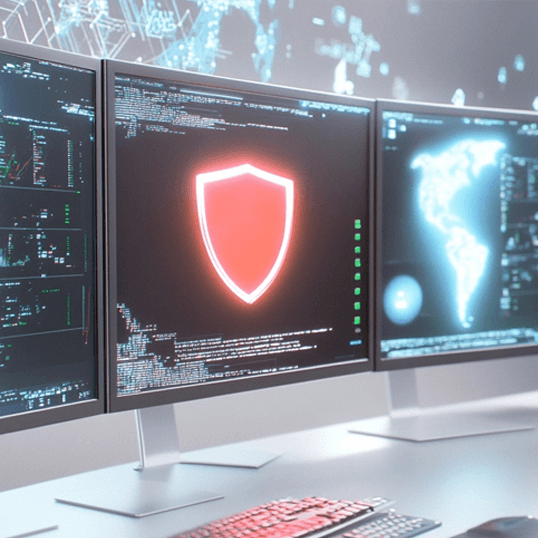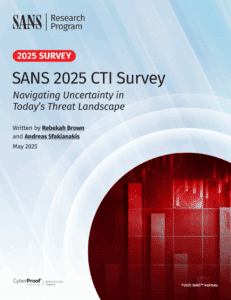Introduction
Cyber threats are constantly evolving, making it harder for businesses to stay secure. Traditional security measures, like annual penetration tests or compliance audits, are no longer enough. Continuous Threat Exposure Management (CTEM) provides a proactive way for organizations to identify, assess, and fix security risks in real-time.
Instead of waiting for a breach to happen, CTEM helps businesses stay ahead of attackers by continuously monitoring vulnerabilities and minimizing potential attack surfaces. This article breaks down what CTEM is, why it matters, and how businesses can implement it effectively.
What is Continuous Threat Exposure Management (CTEM)?
CTEM is a real-time, always-on security approach that helps organizations find and fix vulnerabilities before they can be exploited. It uses automated scanning, AI-driven analysis, and threat intelligence to keep security teams informed of potential looming security risks.
Unlike traditional security testing, which happens occasionally, CTEM provides continuous insights into a company’s security posture, ensuring threats are detected and addressed as they arise.
How CTEM Differs from Traditional Security Approaches
| Traditional Security | Continuous Threat Exposure Management (CTEM) |
| Conducted periodically (e.g., yearly or quarterly) | Operates continuously in real-time |
| Focuses on known vulnerabilities | Identifies emerging threats |
| Static testing, often manual | Automated, AI-driven risk analysis |
| Requires scheduled updates | Provides ongoing security assessments |
How Continuous Threat Exposure Management Enhances Security Operations
CTEM strengthens security operations by automating threat detection, reducing manual intervention, and enabling security teams to prioritize and respond faster to cyber risks. Key benefits include:
- Better threat visibility – Continuous monitoring provides real-time insights into security gaps.
- Integration with Security Information and Event Management and Security Orchestration, Automation, and Response – CTEM connects with security tools to streamline incident response.
- Reducing security team workload – Automates remediation processes, allowing security analysts to focus on critical threats.
CTEM and Threat Exposure Management: A Proactive Approach
Rather than relying on reactive security, CTEM takes a proactive stance by continuously evaluating an organization’s exposure to cyber threats. This approach includes:
- Real-time risk assessment to identify vulnerabilities before they can be exploited.
- Dynamic attack surface management to reduce entry points for attackers.
- Automated penetration testing and red teaming for simulated cyberattacks.
The Role of CTEM in Vulnerability Management
CTEM enhances vulnerability management by prioritizing vulnerabilities based on actual risk rather than theoretical severity scores. Key improvements include:
- Automated vulnerability scanning – Detects security weaknesses continuously.
- Risk-based prioritization – Ensures that critical vulnerabilities are addressed first.
- Continuous updates and patch management – Reduces exposure to newly discovered threats.
Automated Security Control Assessment with CTEM
CTEM leverages automation to continuously test security controls, ensuring they remain effective against emerging threats. This involves:
- Automated compliance checks to align with frameworks like National Institute of Standards and Technology, General Data Protection Regulation, and International Organization for Standardization 27001.
- Simulated attack scenarios to test security defenses in real-time.
- Data-driven decision-making to improve security posture with actionable insights.
CTEM vs. Traditional Risk Management Strategies
Traditional risk management strategies often rely on periodic assessments and outdated security models. CTEM modernizes risk management by:
- Providing continuous security assessments instead of annual reviews.
- Leveraging real-time threat intelligence to improve accuracy in risk identification.
- Integrating with AI-driven analytics to automate threat detection and mitigation.
Integrating CTEM with SIEM and Security Orchestration
For maximum efficiency, CTEM should be integrated with SIEM and SOAR solutions. Benefits include:
- Automated threat correlation – CTEM data enhances SIEM alerts for improved detection.
- Faster incident response – Security orchestration allows automated remediation workflows.
- Comprehensive security visibility – Centralized monitoring reduces blind spots.
The Future of AI in Continuous Threat Exposure Management
AI and machine learning will play a crucial role in CTEM’s evolution, bringing advanced capabilities such as:
- Predictive threat intelligence – AI models can anticipate attacks before they occur.
- Self-learning security models – CTEM systems will adapt dynamically to emerging cyber threats.
- Automated risk mitigation – AI-driven security tools will enable real-time response to vulnerabilities.
Conclusion
In today’s cybersecurity landscape, waiting for the next security audit is no longer an option. CTEM helps businesses stay proactive by continuously identifying, prioritizing, and mitigating risks.
By implementing CTEM, organizations can detect threats faster, reduce attack surfaces, improve compliance, enhance security operations, and save money. Investing in continuous security monitoring today means stronger cyber resilience for the future.
FAQ
How does CTEM differ from traditional security assessments?
CTEM provides continuous security monitoring, while traditional security assessments like penetration tests and audits are performed periodically. Unlike traditional methods that rely on manual testing at fixed intervals, CTEM operates in real-time, ensuring that vulnerabilities are identified and addressed before attackers can exploit them. It also integrates with automated security tools to provide better threat visibility and faster response times.
Does CTEM replace vulnerability management?
No, CTEM enhances vulnerability management by continuously identifying and prioritizing risks based on real-world threat intelligence. While traditional vulnerability management focuses on scanning and patching known weaknesses, CTEM takes it a step further by providing a risk-based prioritization model, which allows security teams to focus on the most critical vulnerabilities first. This ensures that high-impact threats are mitigated before lower-risk issues.
What industries benefit most from CTEM?
Industries with high cybersecurity risks, such as finance, healthcare, government, and e-commerce, benefit significantly from CTEM due to their exposure to advanced cyber threats. Financial institutions deal with high-value transactions and sensitive customer data, making them prime targets for attackers. Healthcare organizations handle protected health information (PHI) and must comply with strict security regulations. Government agencies require top-tier security due to nation-state cyber threats, and e-commerce platforms must safeguard payment data and customer accounts.
Can small businesses implement CTEM?
Yes! CTEM solutions are scalable and can be tailored to businesses of all sizes. Small businesses can leverage automated security tools to gain real-time insights and reduce their risk exposure. Many CTEM providers offer cost-effective, cloud-based solutions, allowing smaller organizations to improve their security posture without needing large IT teams. By integrating CTEM into their cybersecurity strategy, small businesses can stay ahead of evolving threats and minimize the risk of costly breaches.
How does CTEM improve compliance?
CTEM helps businesses meet compliance standards like GDPR, ISO 27001, and NIST by continuously monitoring and testing security controls. Unlike traditional compliance audits that only assess security at a given moment, CTEM ensures continuous adherence to security frameworks by identifying gaps in real-time. This approach simplifies audit preparation, reduces compliance risks, and provides better documentation for regulatory requirements.
What security tools work best with Continuous Threat Exposure Management?
CTEM integrates with SIEM, SOAR, EDR, and vulnerability management platforms, enabling real-time threat detection, automated response, and risk prioritization. SIEM tools collect and analyze security data, while SOAR automates responses to incidents. EDR platforms detect endpoint threats, and vulnerability management solutions scan for weaknesses. When combined, these tools enhance CTEM’s ability to provide a holistic security approach, ensuring that vulnerabilities and security events are managed efficiently and resolved quickly.
How often should businesses update their CTEM strategy?
Organizations should continuously refine their CTEM strategy to adapt to new attack techniques, vulnerabilities, and industry-specific security threats. Since the threat landscape evolves rapidly, businesses should perform regular security assessments, update detection models, and integrate new threat intelligence sources. A well-maintained CTEM strategy ensures that organizations stay one step ahead of cybercriminals and respond proactively to emerging threats.
What is the future of Continuous Threat Exposure Management?
CTEM will continue evolving with AI-driven analytics, cloud-native security, and Zero Trust security models, making it even more effective in preventing cyberattacks. Future advancements will include self-learning security systems, AI-powered threat prediction models, and deeper automation of security workflows. As organizations continue to shift to cloud-based infrastructure, CTEM will also expand to provide better security coverage across hybrid and multi-cloud environments.













